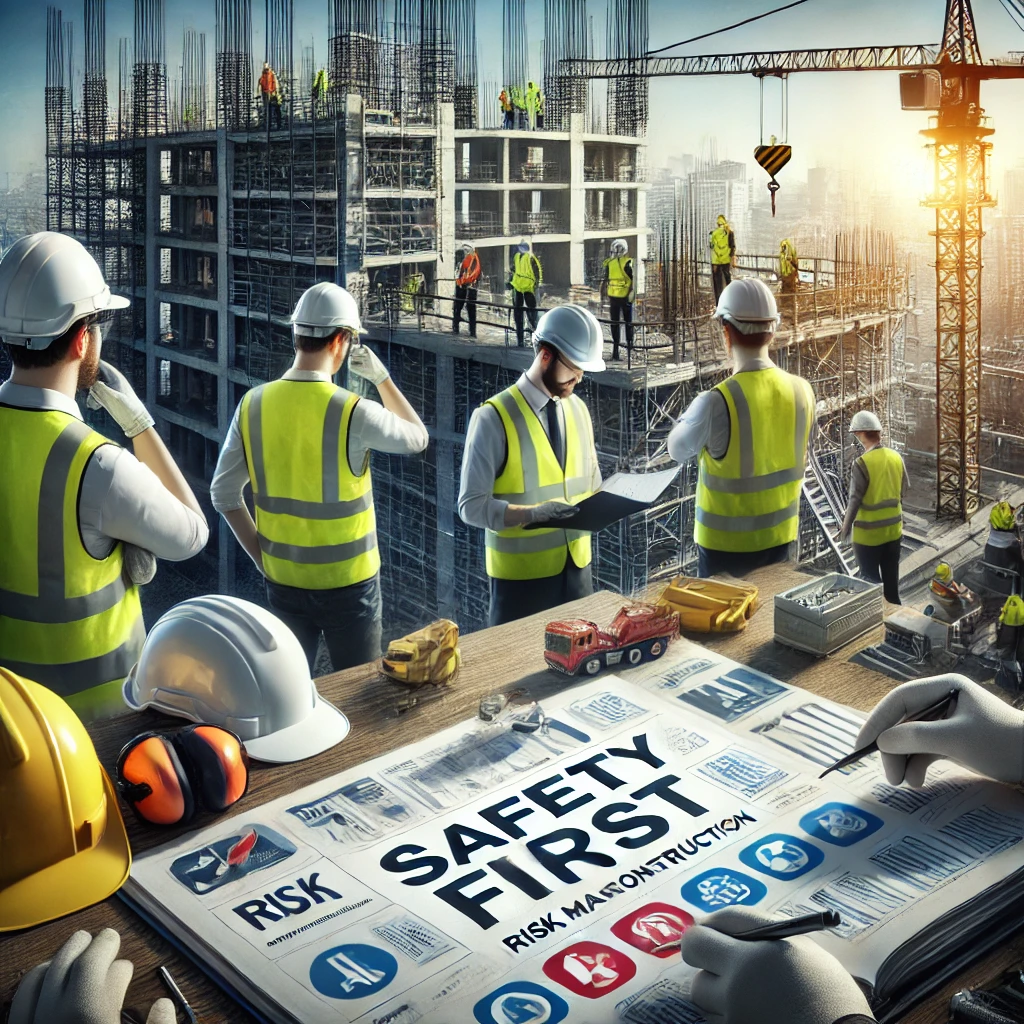Occupational Health and Safety Standards and Issues in the Construction Sector

The construction sector is a key sector of the economy, employing a large number of employees of various specialties and qualifications, all of whose work is associated with serious injuries and occupational diseases. Therefore, it consistently occupies a leading position in the statistical indicators of accidents. The requirements of the new legislative regulations are mandatory for all employers and employees. In 2023, the number of fatal accidents in the workplace amounted to 34, in which only male representatives were involved, and 21 of them were directly related to construction. Accordingly, there are more severe and even more moderate injuries. Health, safety and environmental management in construction involves a critical and impartial approach to identifying, assessing and reducing the risks associated with construction activities. It includes a wide range of practices designed to prevent accidents, occupational diseases and environmental impacts in the workplace. Occupational safety management systems combine policies, procedures, training and monitoring mechanisms to ensure compliance with safety regulations and standards, promote a safety culture and minimize construction incidents. The role of occupational safety in construction is multifaceted and complex. Its primary objective is to protect the physical well-being of employees. This includes ensuring safe working conditions, providing appropriate personal protective equipment, and implementing training programs to increase workers’ awareness and competence in relation to potential hazards. Effective management also includes regular site inspections, risk assessments, and the establishment of emergency response procedures to promptly address any incidents that may arise in a given work area. Occupational safety in construction also extends to environmental protection. Construction activities can have a negative impact on the natural environment. Environmental management plans are developed to reduce the adverse impacts of construction activities on air, water and soil quality, thereby ensuring environmental protection and preservation. Compliance with modern, improved legislation and industry standards, in addition to safety, is a requirement of moral and ethical principles. It contributes to the positive reputation of construction companies, strengthens their competitiveness, and contributes to the successful implementation of their future projects.
Downloads
Metrics
No metrics found.
ნ. რაზმაძე, ნ. რატიანი „შრომის უსაფრთხოება მშენებლობაში”. გამ-ბა „ტექნიკური უნივერსიტეტი“. ISBN 978-9941-28-841-8. 2023 წ.
N. Razmadze, N. Ratiani, A. Korkotadze. „Improvement of safety measures in construction by using modern railing and fall arrest systems“. TASHKENT INTERNATIONAL CONGRESS ON MODERN SCIENCES - III. TASHKENT CHEMICAL-TECHNOLOGICAL INSTITUTE. April 22-23, 2024. Tashkent, Uzbekistan. ნ.რაზმაძე ნ. რატიანი, ა. კორკოტაძე. „მშენებლობაზე უსაფრთხოების ღონისძიებათა გაუმჯობესება თანამედროვე მოაჯირული და საჭერი სისტემების გამოყენებით“. ტაშკენტის ინტერნაციონალური კონგრესი თანამედროვე მეცნიერებებში-III.
ნ. რაზმაძე, ნ.რატიანი მ.ქიტოშვილი,ა.კორკოტაძე. „უბედური შემთხვევების და პროფდაავადებათა რისკ-ფაქტორები მშენებლობაში“. ქართულენოვანი მრავალდარგობრივი სამეცნიერო რეფერირებადი ჟურნალი „მეცნიერება და ტექნოლოგიები“ #1 (744 ). 2024 წ. ISSN 0130-7061 Index 76127
ნ.რაზმაძე, ნ. რატიანი, მ.ქიტოშვილი. ნ.მაჭავარიანი. „უსაფრთხოებისა და ჯანმრთელობის რისკების შეფასება მშენებლობაში“. ქართულენოვანი მრავალდარგობრივი სამეცნიერო რეფერირებადი ჟურნალი „მეცნიერება და ტექნოლოგიები“. #1 (747 ). 2025 წ.
N. Ratiani, M. Darakhvelidze. N. Razmadze. “Establishing a system of hazard identification and risk assessment and existing flaws”. Georgian Engineering News. #2, vol.101, 2024. 14-20 pg. ნ. რატიანი, მ. დარახველიძე, ნ.რაზმაძე „საფრთხის იდენტიფიცირებისა და რისკის შეფასების სისტემის ჩამოყალიბება და არსებული ხარვეზები“.
ნ. რაზმაძე, ა. კორკოტაძე, ნ.რატიანი . “სიმაღლეზე მუშაობის შესაძლო საფრთხეების კონტროლი მოაჯირული და საჭერი სისტემების მაგალითზე“. სტუ, შრომების კრებული #1 (531). 2024 წ. UDS 658. 382. SCOPUS CODE 2213.
ნ. რაზმაძე, ნ.რატიანი, ა. კორკოტაძე. „სიმაღლეზე მომუშავეთა ფიზიკური საფრთხეების მინიმიზაციის საშუალებები“ (მოხსენება და სტატია ინგლ. ენაზე) მეოთხე საერთაშორისო კონფერენცია: „ინოვაციური ტექნოლოგიები მშენებლობაში“. სტუ. სამშენებლო ფაკულტეტი. 15-16 თებერვალი, 2024 წ. „Means of minimizing physical hazards of workers at height“.
N. Razmadze, N. Ratiani, A. Korkotadze. “IMPROVING SAFETY MEASURES FOR WORKERS AT HEIGHT”. International Marmara scientific research and innovation congress. ISTANBUL, JANUARY 27-28. 2024. ნ. რაზმაძე, ნ. რატიანი, ა. კორკოტაძე. “სიმაღლეზე მომუშავეთა უსაფრთხოების ღონისძიებების გაუმჯობესება”. საერთაშორისო სამეცნიერო კვლევებისა და ინოვაციების კონგრესი. სტამბოლი, 27-28 იანვარი, 2024წ.
ნ. რატიანი, ნ. რაზმაძე, მ. დარახველიძე. „შრომის უსაფრთხოების სისტემის დანერგვა და განვითარება საქართველოსა და სხვა ქვეყნებში“. ქართველი მეცნიერები, 150-166გვ. (2024). https://journals.4science.ge/index.php/GS/article/view/3097/3089
Copyright (c) 2025 Georgian Scientists

This work is licensed under a Creative Commons Attribution-NonCommercial-NoDerivatives 4.0 International License.





